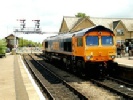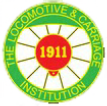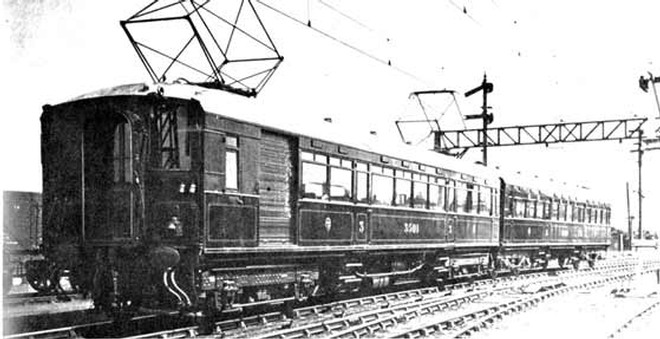Archive Section




Tony Sprought
from The Evolution of Modern Traction Seminar on 5th November 2005
Electrification of this branch line was undertaken by the Dick Kerr company (later English Electric) in 1913 in order to gain experience of electric traction at this potential in preparation for their bid to supply a system in South America (Brazil). The general manager of the Lancashire & Yorkshire Railway, Mr. Aspinall being a great advocate of electrification following the success of the Liverpool suburban system in 1904 by the same company allowed access to the line provided certain remunerations were forth coming. Electric trains started running on 29th July 1913, using four coaches (two motor coaches and two trailer coaches) built by the L&Y railway at their Newton Heath works in Manchester.
The motor coaches were powered by Dick Kerr traction motors, one car at 150 hp, the other at 250 hp operating at 1750 volts dc connected permanently in parallel, current collection being by two pantographs on the motor coach.
Trials were completed by 1916, and as the Bury line was being electrified at 1200 volts third rail it was decided to re-
The 3,500 volt stock was put into store where it remained until 1927 when it was used for an experiment in diesel electric traction. One of the motor coaches was fitted with a Beardmore diesel engine of 500 hp and an English Electric generator and other equipment, forming a four car train which operated on the service between Blackpool and Lytham during 1928/9.
PART 2
The English Electric company provided the first diesel electric railcar for the London Midland & Scottish Railway, utilising the four vehicles from the Holcombe Brook branch these were taken into Derby works where they were converted . One vehicle was fitted with a Beardmore diesel engine of 500 hp. Comprising of eight cylinders of eight and one quarter bore by twelve inch stroke. The engine and generator set were carried in a section of the leading coach, 22feet long and partitioned from the luggage compartment with a driving position at the outer end. The arrangement used in the railcar has in basic principle survived to the present day with diesel engines coupled to main generators on a common shaft with overhung auxiliary machines.
PART 3
Beardmore was an early engine builder making a variety of engines commencing with spark ignition engines which were produced up to1911. After this they turned to diesel engines. They made a series of railcar engines designed for the company by A.E. Chorlton which had good sales especially in overseas markets where large diesels were relatively rare.
Following on from the diesel railcar the company developed the Tornado engine, with changes made to increase output and reduce the weight, the smaller 8-
With various design flaws it was displayed at the Hendon airshow in 1930 where it almost plunged into the ground. Despite these problems the vessel was given a Certificate Of Airworthiness. The R101 departed on October 4 1930 at 6.24 pm for its intended destination in India , over France the R101 encountered gusting wind and crashed into a hillside near Beauvais, north of Paris, then catching fire, 54 passengers and crew died in the crash. According to survivors, top layers of the outer cover and some of the forward gas bags had been torn in the wind causing a loss of flammable hydrogen gas. On impact an engine had impacted the gas bags igniting the gas. The company of Beardmore were generally exonerated from any major blame at the enquiry
